This year May 6 marks National Nurses Day, which will also kick off the beginning of National Nurses Week. The week concludes on the May 12 birthday of Florence Nightingale, the British woman who essentially pioneered the profession of nursing. The day was created as a way to celebrate the people in the nursing profession and honor their contributions to society.
National Nurses Day has a long history, dating back to when it was originally proposed in 1953. Dorothy Sullivan of the U.S. Department of Health, Education and Welfare sent a proposal to the Eisenhower administration, asking that he proclaim a “nurses day” in October. The proclamation was never made. National Nurses Week was originally celebrated from October 11-16, which marked the beginning of Nightingale’s mission to Crimea, but again no official action was taken by congress. It would not be fully recognized in America until 1982, when President Ronald Reagan signed a proclamation officially declaring May 6 as National Nurses Day. In 1993, the American Nurses Association would expand to observe National Nurses Week.
The modern nursing world has changed and grown quite steadily since the beginning of the 1980s. According to a survey conducted by the U.S. Health Resources and Services Administration the number of licensed nurses working in their chosen field during the year 1980 was 1,272,851. As recently as 2008, that number had grown to 2,596,599. Because of that, nursing has consistently ranked among professions with the highest projected growth in the next 20 years. Yet the big problems facing the nursing industry revolve around a combination of too many current nurses approaching retirement age and whether there is enough being done to recruit enough people to offset a projected shortage in the relatively near future.
Ryan Rosseter is the chief communications officer for the American Association of Colleges of Nursing (AACN), an organization devoted to helping advance nursing education, research and practice. He argues that it isn’t the lack of interested applicants, but that programs are already at capacity.
“There is a lot of discussion about the nursing shortage and the need for nurses in the future, but I think sometimes people perceive that as there not being a lot of interest in nursing,” said Rosseter. “We track the number of students that are applying to nursing schools, and for the past eight years the number of qualified applicants has gone up considerably. We know last year alone there were more than 75,000 applicants who met all the criteria for acceptance who were rejected because there simply wasn’t the space for everyone.”
According to the U.S. Bureau of Labor and Statistics, the total number of jobs for nurses projected from 2008-2012 shows an increase of about 22 percent. While that means over 581,000 more nursing jobs could be created over that time span, when you compare that figure to the overall growth of the U.S. population over that same time span, it leaves a projected shortage of about 260,000 nurses by the year 2025.
That number doesn’t simply apply to clinical nurses in hospitals and operating rooms either. Nurses hold jobs in school clinics, churches, homeless shelters, insurance companies and other businesses. The impact from a quarter-million nurse shortage would be significant. An increased workload on currently employed nurses can lead to burnout, which in turn can compromise patient safety in a clinical environment. Nurses are now responsible for entire floors of patients, all while maintaining a less-than normal schedule that requires late nights and long weekends.
Nursing programs, like the one offered at SUNY Adirondack, are teaching their students to be prepared to continue learning and adapting to the nursing world beyond their classrooms.
“Our program is a two-year associate degree program in nursing and they sit for the licensing exam when they complete our program,” said Donna Healy, registered nurse and chairperson for SUNY Adirondack’s Health Science Division. “We encourage all of our students to continue on to get their bachelor’s degree either full time or part time. The students are eligible to work, so they get jobs as a registered nurse while in school.”
SUNY Adirondack’s program is only the beginning for students hoping to maximize their career path. New York State is hopeful to get the total number of nurses with baccalaureate degrees to 80 percent by the year 2020.
“We provide entry into practice and we encourage our students to continue on,” explains Healy. “We tell the students that nursing is life-long learning and encourage them to pursue their bachelor’s degrees. There are many opportunities to continue their education, especially through distance learning.”
What’s becoming even more of a concern is the steady increase in the age distribution among registered nurses. Since 1980, the number of registered nurses has peaked in an older age range every eight years. While that might indicate pretty reliable job security, it also means the bulk of our country’s nurses aren’t getting any younger. As of 2008 almost 500,000 of all 2,596,599 registered nurses employed in their field were between the ages 50-54. The survey also shows that 45 percent of all registered nurses are over the age of 50. The average age for a nurse in the United States is 45.5 years. As the 50-54 demographic creeps ever closer to being able to retire, the total number of employed registered nurses appears headed for a steep decline over the next decade.
Recruiting younger nurses isn’t easy, but with the demand sufficiently outweighing the supply, nurses can make quite a significant amount of money upon getting licensed. The Bureau of Labor Statistics indicated a starting salary of $40,000, and that the average salary for a nurse in the United States is just shy of $67,000 annually. Some hospitals and health care facilities have even started offering signing bonuses to newly recruited nurses in places where they are needed the most.
The increases in annual compensation aren’t specifically targeted at younger recruits. People considering a second career might take another look at the profession once they see what they stand to earn in a relatively short time. Those who already have a bachelor’s degree can qualify for accelerated programs designed to have them licensed within a year.
Of course, another potential recruitment target: men, who only make up about 6.6 percent of all registered nurses.
“There are some schools that offer a men’s mentoring program for students interested in nursing, and there are scholarships targeted just for men,” said Rosseter. “The American Assembly of Men in Nursing (AAMN) does outreach campaigns in different parts of the country trying to form a network for the male students that are out there.”
The stereotypes of a male working in such a female-dominated industry likely contribute to that low number, but opportunities for nursing in flight units, trauma centers or emergency rooms offer a bit more of an intense option to attract potential male recruits.
“We’re getting there,” said Healy when asked if they are seeing a rise in the number of men in the nursing program. “One of the things that has helped recruit men to nursing is they’ve increased the salaries, and companies like Johnson & Johnson have done tributes to men in nursing that offered a very positive perspective of the contributions they can make to the profession.”







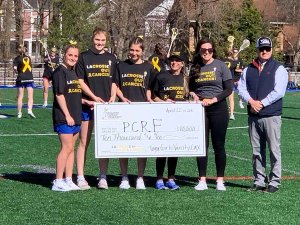




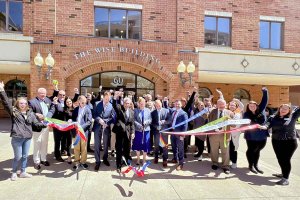
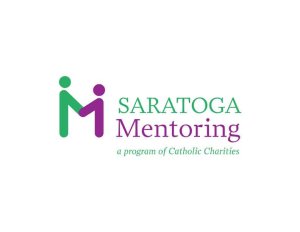


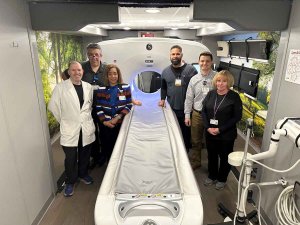








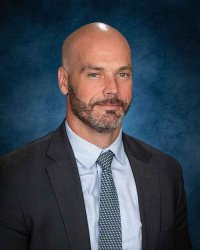



 How to resolve AdBlock issue?
How to resolve AdBlock issue? 









